High-Intensity Focused Ultrasound (HIFU) in Japan
Search and Compare the Best Clinics and Doctors at the Lowest Prices for High-Intensity Focused Ultrasound (HIFU) in Japan
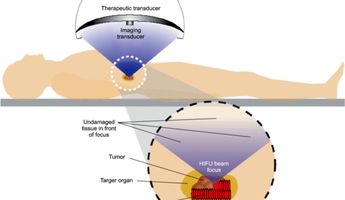
Find the best clinics for High-Intensity Focused Ultrasound (HIFU) in Japan
No clinics available
Indonesia offers the best prices Worldwide
Price: $ 56

- Home
- Japan
Compare Before & After Photos of _procedure_photos.phpHigh-Intensity Focused Ultrasound (HIFU)
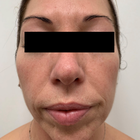
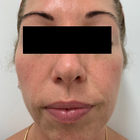
Front view

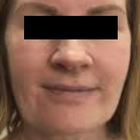
Front view


Front view
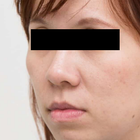
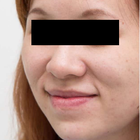
Front view
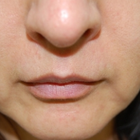
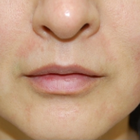
Front view
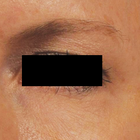
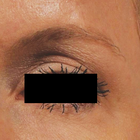
Front view
WHY US?
At Medijump, we're making medical easy. You can search, compare, discuss, and book your medical all in one place. We open the door to the best medical providers worldwide, saving you time and energy along the way, and it's all for FREE, no hidden fees, and no price markups guaranteed. So what are you waiting for?

Free

Best Price

Widest Selection

Risk-Free
What you need to know about High-Intensity Focused Ultrasound (HIFU) in Japan
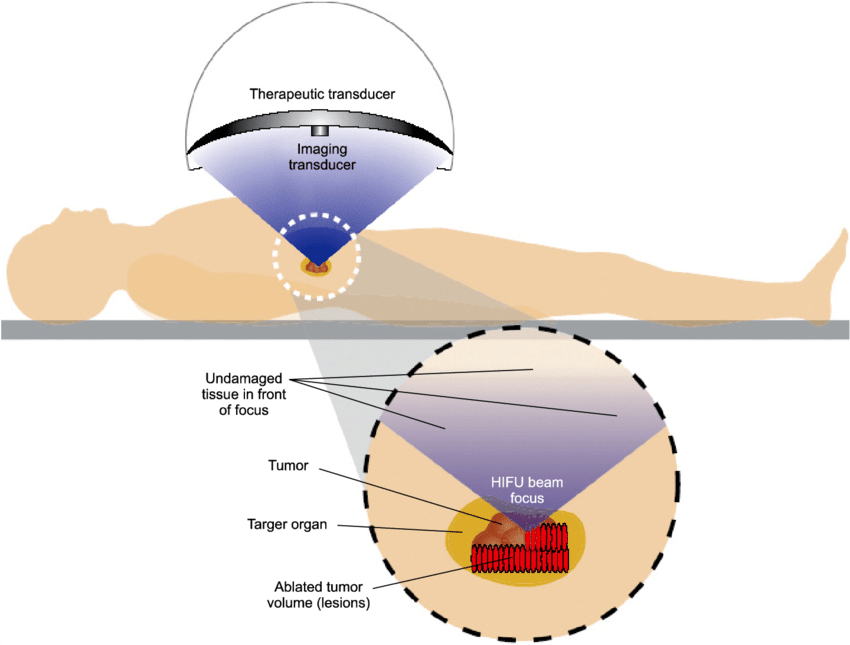
High intensity focussed ultrasound technique (HIFU) also known as focussed ultrasound surgery (FUS), uses non-ionizing ultrasound waves to heat up your body tissues. Temperature can be increased up to 70 to 90°C. These sound waves do not pass through air and bone. It is used for multi-purposes. It works to increase your blood, and lymph flow stimulates cell division and destroys tumor cells. It can also be used to treat a number of disorders including various types of cancer and uterine fibroids. Its use in the treatment of prostate cancer is gaining fame. It can also be used for cosmetic reasons, to reduce wrinkles, aging lines and to lift your loose skin. It is found to be most effective on jawline and cheeks. It should always be performed by the experts because the sonication of the wrong tissue can be dangerous. Also, there might be incomplete destruction of the tumor. Some areas of your body can not be sonicated as they are sensitive to sound waves, this should also be kept in mind while performing HIFU. It can only be used to treat localized cancer and tumors. Cancer which has spread cannot be cured through HIFU.
As HIFU is involved in the treatment of a number of diseases, before going through it, you may suffer from those diseases. These disorders include ovarian fibroids, different types of cancers, breast tumors, Parkinsonism, and a number of other neurological disabilities. You might have loose skin of face, neck, and chest. Vaginal laxity is also a problem. After HIFU, your tumors are destroyed, cancer cells are killed and diseases are cured. Your loose skin looks tightened and strengthened. Wrinkles and aging lines are gone. Vaginal and skin laxity are removed. You look younger than your actual age.
What does a High-Intensity Focused Ultrasound (HIFU) Procedure Involve?
The procedure begins with cleaning the area to be sonicated with alcohol swabs so that there are no germs and bacteria. In the next step, a gel is applied to your skin. Magnetic resonance imaging (MRI) or ultrasound is used to focus the exact tissue, organ or tumor that needs to be treated. The individual is sedated to avoid discomfort and pain during the procedure. After this, the procedure differs according to the purpose of HIFU. In general, an acoustic lens is used to focus sound waves on the targeted organ. The transducer device is used to emit sound waves. The sound waves propagate through the various layers of skin to reach the tumor to be destructed. When sound waves reach the tumor, heat is produced there increasing the temperature up to 90°C in 20 seconds only. This heat starts destroying the cancer cells there.
How Long Should I Stay in Japan for a High-Intensity Focused Ultrasound (HIFU) Procedure?
It is a 1 to 4 hours procedure. It depends upon the purpose for which HIFU is being performed. Generally, it is an outpatient procedure. You can be discharged from the hospital after the effects of the sedatives subside. You should plan to stay in Japan for at least 14 days after your Procedure, this will allow for the initial recovery and follow-up check-ups, etc.
What's the Recovery Time for High-Intensity Focused Ultrasound (HIFU) Procedures in Japan?
The recovery time differs and depends upon the purpose for which HIFU is being carried out. You may suffer from pain and discomfort for 3 to 4 days after the procedure. The soreness and swelling will subside in 2 to 3 weeks. It has less recovery time and has less invasive techniques approved by the FDA. The Non-ionizing radiations used in this technique are the least damaging.
What sort of Aftercare is Required for High-Intensity Focused Ultrasound (HIFU) Procedures in Japan?
Aftercare differs in accordance with the purpose for which HIFU is done. However, the following points should be kept in mind to look after yourself at home after being discharged:
- Visit your doctor on a regular basis.
- Do not drive home if you are still under the influence of sedatives.
- Eat healthily. Follow a diet plan made by an expert. It can help you recover faster.
- Take your medicines as and when prescribed by the doctor.
- Take a rest and give yourself time to recover.
- In the case of HIFU for cosmetic reasons, avoid contact with sunlight and wear sunscreen while going out.
- Do not rub or massage your skin.
- Look for something wrong. If you find any sign, visit your doctor immediately.
- In case of any discomfort, contact your physician. Do not go for self-medication.
What's the Success Rate of High-Intensity Focused Ultrasound (HIFU) Procedures in Japan?
HIFU has been found to be very successful in the treatment of most of the disorders. However, the success rate differs for each purpose. According to a study, the overall success rate for prostate cancer treatment was reported to be 84%. Cancer patients were divided into 3 groups. The high-risk group showed a low success rate. The intermediate group showed a higher success rate reaching 83.4% and the low-risk group showed the highest success rate of 94.2%. It is also found to be very effective and successful in treating skin laxity and uterine fibroids.
Are there Alternatives to High-Intensity Focused Ultrasound (HIFU) Procedures in Japan?
In actuality, HIFU itself is a non-surgical alternative to most of the surgeries. However, the following are some useful alternatives to HIFU:
- Dermal fillers: it is an alternative of HIFU for a facelift. Injections containing Botox, Restylane, etc. are given into your skin to make it look lifted and plump. Your skin looks wrinkle-free and you look younger than your age.
- Uterine artery embolization: this is a treatment for uterine fibroids. Arteries supplying the uterus are occluded by injecting an embolic agent into it. This cuts off blood supply to the fibroids causing them to shrink and ultimately die.
- Radical prostatectomy: also known as an open prostatectomy, entire prostate and seminal vesicle along with some lymph nodes in the pelvic area is surgically removed. Nerve damage is avoided to ensure erection and active sexual life afterward.
- Bilateral orchiectomy: in this surgery, both the testicles are surgically removed. This helps in treating prostate cancer.
- Brachytherapy: in this therapy, radioactive substances are directly inserted into the prostate gland. These are called seeds which give off radiations around the area where they were placed.
Whilst the information presented here has been accurately sourced and verified by a medical professional for its accuracy, it is still advised to consult with your doctor before pursuing a medical treatment at one of the listed medical providers
No Time?
Tell us what you're looking for and we'll reachout to the top clinics all at once
Enquire Now

Popular Procedures in Japan
Prices Start From $979

Prices Start From $714

Prices Start From $16

Prices Start From $28

Prices Start From $53

Recommended Medical Centers in Japan for procedures similar to High-Intensity Focused Ultrasound (HIFU)

- Interpreter services
- Translation service
- Religious facilities
- Medical records transfer
- Medical travel insurance
- Health insurance coordination
- TV in the room
- Safe in the room
- Phone in the room
- Private rooms for patients available

- Interpreter services
- Translation service
- Religious facilities
- Medical records transfer
- Medical travel insurance
- Health insurance coordination
- TV in the room
- Safe in the room
- Phone in the room
- Private rooms for patients available

- Interpreter services
- Translation service
- Religious facilities
- Medical records transfer
- Medical travel insurance
- Health insurance coordination
- TV in the room
- Safe in the room
- Phone in the room
- Private rooms for patients available
High-Intensity Focused Ultrasound (HIFU) in and around Japan
About Japan
Japan is special in its own way; the culture, food, people, as well as technology are envied by the world over. With old Japan, comes the ancient tradition in the form of a geisha performance, onsen (hot spring) visit in the mountains, tea ceremony, or shrine visit. In contrast, there is modern Japan, full of smart systems and electronics, colorful advertisements and displays, and ultra-modern architecture. In recent years, Japan has become one of the top destinations in the world for oncology treatments and sees many tens of thousands of medical tourists each year. Many of these travel from within the region, including China and Korea, but they are unable to compete with the SE Asian nations with prices. Private hospitals are located across the country, with a particular focus in major cities like Tokyo, Kyoto, and Osaka. 25 of these facilities are JCI-accredited, with many offering High-Intensity Focused Ultrasound (HIFU) procedures.
Popular Parts of Japan
Located in the Pacific Ocean, Japan is a stratovolcano archipelago. The four largest islands are Honshu, Hokkaido, Kyushu, and Shikoku. With a population of 127 million, 98% are ethnic Japanese. The country perfectly balances traditional with modern technology. Tourists will first see its exceptionally modern face, but after traveling around, they will find many opportunities to connect with the beautiful traditional culture.
- Tokyo is Japan’s capital, one of the 47 prefectures of Japan. It’s a huge metropolis that offers traditional arts and culture, futuristic infrastructures, and good restaurants. The cherry blossoms that bloom in Spring is one of the most popular sights. The soft pink petals are an icon of the country. There is an unlimited choice of shopping, many museums that cover every era of Japanese art history, and even a robot restaurant.
- Kyoto is made of religious architecture, with around 2000 temples and shrines. It moves at a slower pace than any other city in Japan. Filled with samurais, geishas, Zen gardens, and the torii gate, Kyoto is the spiritual center of Japan. The city is also known for its food, head to the Nishiki Market, a four-hundred-year-old local food market that offers a range of national cuisine to modern food from all over the world.
- Osaka, the second largest metropolitan area after Tokyo is known to be the most delicious city. The city is nicknamed “the nation’s kitchen.” Visit Dotonburi to experience the food culture of Osaka. Besides the food, there are numerous attractions that tourists should visit such as Universal Studios Japan, Cup Noodles Museum, Aquarium Kaiyukan, Osaka Castle, and Umeda Sky Building.
- Fukuoka has a welcoming feel with sunny weather and so much to do. It’s made up of two towns, the port city of Hakata and the former castle town of Fukuoka. Visit the impressive Fukuoka Castle, explore the Sumiyoshi-Jinja Shrine, learn history in Kyūshū National Museum, experience the ancient art of calligraphy and origami in Hakata Machiya Folk Museum, and enjoy a calming bath in one of the Onsen hot springs.
- Nagoya is the industrial center of Japan. It’s the birthplace of Toyota and a popular pinball-style game Pachinko. Although many of the historic buildings were destroyed in the air raids of 1945, tourists can still indulge in its culture and tradition. Visit the Nagoya Castle that was reconstructed in 1959, walk around the Atsuta Shrine, or see the history of the automobile in the Toyota Automobile Museum.
Weather and Climate in Japan
Japan has four distinct seasons.
- Summer starts in June and lasts until August. The temperature can get very hot, up to 40 °C in some places, with high humidity. June is the rainy season where the farmers plant their rice. The rainy season is over in August but the typhoon season starts to peak.
- Autumn starts in September and ends in November. September has the greatest risk of typhoons. The weather is generally mild. October is pleasantly warm with less humidity than in summer, making it a food time for traveling the country.
- The temperature will drop in Winter. It lasts from December to February and is usually dry, pleasant, and sunny. The average temperature is around 2°C to 12°C, it rarely drops below 0°C. The northern island of Hokkaido, the Japan Alps, and the Japan Sea coast get a lot of snow while Tokyo gets very little snow.
- Spring is said to be the best time to visit Japan because of its mild weather and cherry blossoms. The season starts in March and ends in May. The temperature will gradually increase during spring with little rainfall and clear sky.
Getting Around in Japan
The main airport for international tourists is the Narita International Airport. It is located around 60km east of central Tokyo. It serves both domestic and international flights to almost every major city around the globe. There are several budget airlines that operate flights from this airport, namely Jetstar Japan, Eastar Jet, and Peach. There are other international airports such as Kansai International Airport, New Chitose International Airport, and Kyushu Saga International Airport.
To get to Tokyo from Narita Airport, tourists can use the rail, bus, taxi, or car rental. The most affordable train line is the Keisei Line that connects with the Toei Asakusa Subway Line and the Yamanote Line, it costs around ¥1,190 to ¥1,230 ($10 to $11.3). There’s also the Sky Access Express train that offers better access to Tokyo, a trip to Asakusa will cost around ¥1,290 ($11.9) and take about 58 minutes. The quickest way to get to Tokyo will be by the Skyliner train, it takes just 36 minutes to Nippori and will cost around ¥2,470 ($22.7). The airport introduced N’EX Tokyo Round-Trip ticket for foreign passport holders that provides round-trip travel from Narita to Tokyo and back for ¥4,000 ($37) for adults and ¥2,000 ($18.4) for children.
A regular taxi from Narita to Tokyo is very expensive, usually over ¥20,000 ($184). The best option is the shared minibus that starts with ¥6,180 ($57) per person. Buses are usually more affordable, the Limousine Bus costs ¥2,880 ($26.5) and the Tokyo Shuttle costs around ¥900 ($8) to ¥1,000 ($9).
Getting around Japan is fairly easy because the country has excellent public transportation. It is recommended to get a Japan Rail Pass. Japan’s bullet train is fast but expensive. There are cheaper train options. Buses are less expensive but will take more time than trains.
Tourist Visas in Japan
Citizens of 68 countries and territories can enter and stay in Japan for up to 90 days without a visa. Citizens of Indonesia, Brunei, and Thailand are granted a 15-day visa-free trip to Japan. Citizens of the United Arab Emirates are allowed to stay for 30 days without a visa. It is advisable to contact the nearest Consular Section of the Embassy or Consulate General of Japan for more information.
Additional Information
- Local Currency: Yen (¥) is the local currency. $1 will get you ¥11 ¥1,000 is worth approximately $9.
- Money & Payments: ATMs are usually located in post offices and convenient stores. There are only a few branches of major Japanese banks that accept foreign-issued cards. Credit cards are accepted in major cities, but the rural area doesn’t. It’s best to always bring cash and bring a coin purse because everything below ¥500 is coins. Tipping is not mandatory, high-end hotels and restaurants usually add a 10% service fee to the bill.
- Local Language: The official language is Japanese. English is common in major cities with many tourists such as Tokyo, Osaka, and Tokyo. Some restaurants write their menu in English and Japanese.
- Local Culture and Religion: The dominant religion in Japan is Shinto and Buddhism. There’s a small group of Christians as well.
- Public Holidays: Japan has sixteen national holidays each year, including Children’s Day, Constitution Memorial Day, and Marine Day. The country hosts numerous annual festivals such as Gion Matsuri in Kyoto, Awa Odori in Tokushima, and Yuki Matsuri Snow Festival in Sapporo.
Popular Searches
- Plastic Surgery in Thailand
- Dental Implants in Thailand
- Hair Transplant in Thailand
- Breast Augmentation Thailand
- Gastric Sleeve in Thailand
- Gender Reassignment Surgery in Thailand
- Laser Hair Removal in Bangkok
- Botox in Bangkok
- Dermatology in Bangkok
- Breast Augmentation in Bangkok
- Coolsculpting in Bangkok
- Veneers in Turkey
- Hair Transplant in Turkey
- Rhinoplasty in Turkey
- Stem Cell Therapy in Mexico
- Rhinoplasty in Mexico
- Liposuction in Mexico
- Coolsculpting in Tijuana
- Rhinoplasty in Korea
- Scar Removal in Korea
- Gastric Sleeve in Turkey
- Bone Marrow Transplant in India
- Invisalign in Malaysia
- Plastic Surgery in the Dominican Republic
- Tummy Tuck in the Dominican Republic
- Plastic and Cosmetic Surgery in Poland
- Rhinoplasty in Poland
- Hair Implant in Poland
- Dental Implants in Poland
- IVF in Turkey